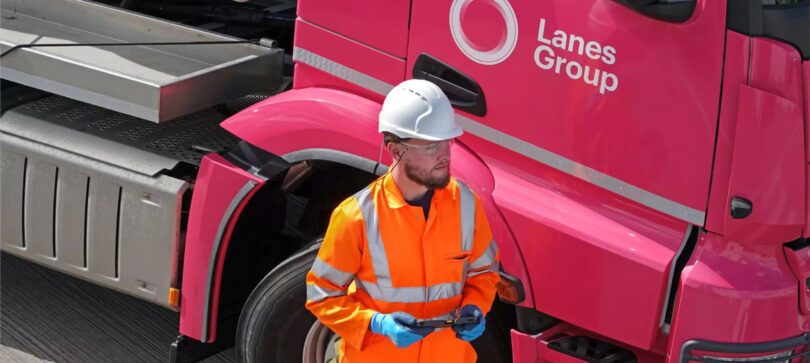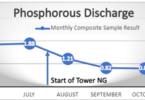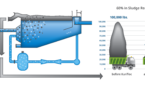It is an opportune moment for the UK water industry. There is both business and political pressure to reduce cost and waste while tightening environmental protection. Lanes Group sees digital transformation as a way to reimagine its entire operation. To achieve this, it is overhauling its approach to connectivity.
Transforming the UK’s water management
Visitors to the UK, touring the Lake District National Park and experiencing a summer downpour, may be surprised to learn the country faces a drought problem and it has become common for regional utility companies to impose restrictions to help conserve water. In fact, restrictions affected 10 million people in 2022–2023.
It is not that the UK lacks water, but rather that water is not managed effectively. The UK loses three billion liters of perfectly good drinking water each day, largely due to faulty pipes. There are more than 400,000 miles of water pipes in the UK water network, and many of these pipes are over 100 years old.
The industry faces a relentless battle to upgrade the ageing network while carrying out the daily task of fixing leaks and addressing blockages. It must do so around the clock, in all weather conditions, and minimize disruption to homes and businesses.
There is growing recognition that building the water network of the future will require an entirely new way of working. Lanes Group is at the forefront of this thinking. The Leeds-based business is the leading provider of utilities and infrastructure services in the UK and Ireland. By using thousands of sensors and cameras, and by applying AI to large datasets, Lanes Group wants to transform how water and wastewater are managed.
To achieve this, it is overhauling its entire approach to connectivity.
“Our IT network was once seen as a utility,” says Mo Dawood, group IT director at Lanes Group. “We want to flip that. The network can be a revenue stream. If we can unlock our operational data, we can change the water industry.”
Data and digital workflows to support operational excellence
The network, Mo says, is foundational. It can enable a more dynamic workforce, create flexibility across Lanes’ five business units, support IoT innovation, and accelerate the onboarding of mergers and acquisitions. Lanes is looking to increase annual revenues from £600 million to £1 billion in the next three years; this won’t all be achieved through organic growth.
“In this industry, when growth opportunities come along, you have to take them,” says Mo. “We announced two new contracts in December, which will add an extra £170 million to annual revenues, both of which will need to be on board by April. We’re moving at 100 miles per hour. A scalable network is key to the rapid integration of new business.”
Where previously each business unit had its own network, with a disparate mix of hardware, Lanes has now created a common standard, managed from a single pane of glass. It has retired a legacy VPN in favour of an SD-WAN, with a zero trust approach to network access.
Data security is now critical to the business, says Mo. As a service provider to national infrastructure, Lanes is held to the highest cybersecurity standards. It is now impossible to progress on utility tenders without having the right network security in place.
“When bidding for new contracts, we can now show microsegmentation, packet loss analysis, cloud access, and zero trust network access,” he says. “We believe the strength of our network creates a competitive advantage.”
For operational teams, out on the road, fixing leaks, often with a one-hour service-level agreement, the new network enables reliable mobile working from anywhere in the UK. Video footage from work sites can be uploaded to a central platform and viewed by off-site experts if needed, wherever there is a signal.
This level of connectivity has a direct impact on the bottom line, Mo points out. Lanes has the UK’s largest fleet of equipment, but it means little if it is not working. On average, each vehicle generates revenues of £1000 a day, with some depots having more than 50 vehicles. Being offline is not an option.
This, says Mo, is phase one. By creating a unified data lake, and bringing analytics and AI to bear, Lanes hopes to reimagine the role of an infrastructure provider. Maintenance will be more proactive, there will be alerts well ahead of stress points, smarter scheduling of work crews around weather events, and a new way of engaging with the public.
“We know, for example, that in areas with high birth rates, you tend to find drains blocked with wet wipes. We can play a role in targeted communication with the public in those areas,” he points out. “We can help change the conversation around water use.”
Securing the network to power a smart workforce
Lanes’ network upgrade is built on HPE Aruba Networking, including standardizing on HPE Aruba Networking CX switch series, HPE Aruba Networking Wi-Fi 6 wireless access points, and the HPE Aruba Networking Central cloud-based, AI-powered management platform. All sites are securely interconnected as a unified SD-WAN based on the HPE Aruba Networking EdgeConnect SD-Branch architecture to support scalability, flexibility, and resilience. At its heart is HPE Aruba Networking Secure Service Edge (SSE), designed for zero trust cloud-native network access control, providing Lanes Group with a robust unified secure access service edge (SASE) platform.
HPE Aruba Networking SSE integrates security functions directly with networking capabilities, providing a seamless and unified approach to secure access. Lanes benefits from a broad range of cloud security services, including secure web gateway (SWG), cloud access security broker (CASB), zero trust network access (ZTNA), and firewall as a service (FWaaS). HPE Aruba Networking SSE also provides extensive visibility into user and device activities, enabling highly effective monitoring and threat detection.
“The nature of the business is that we’re working from anywhere. We have temporary sites, teams working alongside customers, and operational teams in the middle of nowhere. We need flexibility.”
“HPE Aruba Networking SSE zero trust framework means we can check every user and every device. It doesn’t matter if you’re working from the roadside, from home, or from a coffee shop. I can see everything from here in Leeds.”
This approach, he adds, is the most sensible in a world where everything is software as a service (SaaS) and everyone works off a mobile device. “VPN is slow, expensive, and never as secure as you’d hoped.”
Part of the AI-powered HPE Aruba Networking architecture is the HPE Aruba Networking User Experience Insight (UXI) sensors. These provide Lanes Group with deep insight into the end-user experience, helping check network and application performance from the device perspective and providing real-time diagnostics and remedies. Reliable network performance is vital in building confidence in digital applications.
“There are two reasons for this,” Mo says. “Firstly, if I won’t accept a low standard of performance, then I can’t expect others to. Secondly, I want to reduce the amount of noise coming into the help desk. Like with water pipes, we want to be more proactive in fixing our connectivity issues.”
The choice of HPE Aruba Networking, Mo continues, was largely driven by ease of management. It was the only vendor capable of providing a single pane of glass from which to view and manage the entire network. “I was clear that we needed one interface. I did not want to jump between different systems. There were other vendors with interesting pieces of individual technology, but only HPE Aruba Networking brought everything together.”








